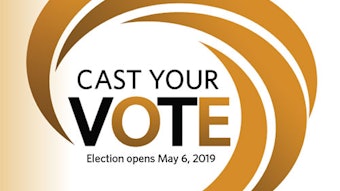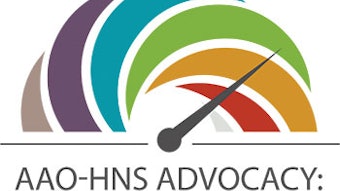What every otolaryngologist should know about electronic cigarettes, especially JUUL
Electronic cigarettes (e-cigarettes) have become increasingly popular in the United States. While it is welcome news that traditional cigarette use is decreasing, there has been a disturbing upsurge in use of e-cigarettes among youth. E-cigarettes have become a gateway for nicotine addiction among youth, with many graduating to use other, more dangerous tobacco products.
Robert K. Jackler, MD
The epidemic of electronic cigarettes use among youth
Electronic cigarettes (e-cigarettes) have become increasingly popular in the United States. While it is welcome news that traditional cigarette use is decreasing, there has been a disturbing upsurge in use of e-cigarettes among youth. E-cigarettes have become a gateway for nicotine addiction among youth, with many graduating to use other, more dangerous tobacco products. In February 2019, the Center for Disease Control and Prevention reported that current e-cigarette use among American high school students had reached 20.8 percent (3.05 million users), while tobacco use among middle school students 4.9 percent (570,000 users).1 High school use of e-cigarettes increased by a disturbing 77.8 percent between 2017 and 2018.

Both the U.S. Surgeon General and the Commissioner of the Food and Drug Administration (FDA) have characterized the precipitous rise of e-cigarette use among youth as an “epidemic.” Nicotine addiction, the principal driver of tobacco use, is a most difficult habit to break. The vast majority of nicotine addiction commences during adolescent years. The most effective way to reduce the population of adult smokers is to prevent teens from starting in the first place. Unless the surge of adolescents becoming nicotine addicted via e-cigarettes is reversed, the public health gains from declining tobacco use of recent decades may well be reversed.
The Principal Driver of the Youth Epidemic is JUUL
JUUL is an electronic vaping device that resembles a USB memory stick. The appeal of JUUL to teenagers includes its stealthiness (that parents and teachers may not recognize it for what it is), its appealing flavors (e.g., mango, crème brûlée, mint, fruit medley), and its positioning as the latest technology.2 JUUL’s advertising has been youth-targeted and has heavily exploited social media channels frequented by youth.3,4 After only three and a half years on the market, JUUL has had a spectacular rise in sales. In January 2019, JUUL represented 73.8 percent of the U.S. e-cigarette market. JUUL has been the principal driver of the meteoric rise of e-cigarette among American youth. In 2019, JUUL has become an intense fad among American school-aged youth driven by countless thousands of viral peer to peer social media postings.
The public health community was deeply concerned in December 2018, when the maker of Marlboro cigarettes (Altria Group, Inc., Richmond, VA) announced a $12.8 billion investment to acquire a 35 percent equity interest in JUUL. This gave the three-and-a-half-year-old company a remarkable valuation of $38 billion—the fastest growing startup in history to surpass $10 billion in valuation (supplanting Facebook). The combining of Altria’s flagship brand, Marlboro, with JUUL brings together the leading cigarette and e-cigarette starter brands among American high school students. Concern that the two brands have a strong potential for marketing synergies led then FDA Commissioner Scott Gottlieb to express concern that the alignment of the brands will undermine efforts to reduce youth initiation to nicotine addiction.
The Nicotine Arms Race
Until recently, most e-cigarette liquids carried one to two percent nicotine, with a few considered “super high” at three percent, intended for the two-pack-a-day smoker.5 In 2015, JUUL introduced a five percent nicotine (59mg/ml) vaping device with a novel nicotine chemistry— nicotine salts, which improved palatability, enabling higher concentrations of nicotine without undue bitterness. JUUL’s exceptionally high nicotine concentration makes it highly addictive for nicotine naïve individuals. Following JUUL’s phenomenal success, numerous knockoff devices were introduced that emulated or even exceeded JUUL’s high nicotine level.
More than 70 e-liquid brands sell high- nicotine products, meaning those with nicotine concentrations of five percent or higher, by volume in bulk—30 milliliters or more—which is equivalent to more than 40 cigarette packs. All of these products come in multiple, youth-appealing sweet and fruity flavors, often in colorful bottles with a picture of cookies, candy, or other dessert treats. Concentrated nicotine is highly toxic, and these large-volume nicotine bottles are a poisoning risk for children. The lethal dose for a toddler, if ingested, is a bit over one milliliter of e-liquid with a five percent nicotine content. The typical 30 milliliter bottle, which almost never comes with a child-resistant cap, contains six teaspoons of concentrated nicotine liquid. A single teaspoon is toxic enough to kill five toddlers—the full bottle an entire class of 25 preschoolers.
Health effects of nicotine vapor
E-cigarettes deliver nicotine in vapor form. Although they avoid some of the known carcinogens produced by the burning leaf in smoking tobacco, it is not natural to repeatedly inhale aerosols of propylene glycol and glycerin together with flavor chemical into one’s lungs on a daily basis. E-cigarette vapor contains formaldehyde, heavy metals, and other toxic compounds. Flavor chemicals (e.g., chocolate, gummy bear, cotton candy), which are safe for ingestion, may have toxicity when inhaled. For example, the diacetyl compound that flavors butter microwave popcorn has caused bronchiolitis obliterans when inhaled among factory workers. Hence, while they may well be safer than traditional cigarettes, e-cigarettes are not safe. Keep in mind that it takes two to three decades before a smoker of conventional cigarettes gets emphysema or lung cancer. We will not know the long-term effect of e-cigarette vapor on health for many years to come.
Recommendations for teenagers and their parents
Almost all nicotine addictions commence during adolescence. Many adolescents do not understand that e-cigarettes deliver nicotine and do not understand how addictive they are. Physicians who care for adolescents should be prepared to provide them education on the dangers of smoking, e-cigarette use, and their vulnerability to addiction. Importantly, becoming nicotine-addicted via e-cigarettes during teen years greatly increases the likelihood that they will graduate to traditional, combustible cigarettes. Teenage nicotine addiction correlates with greater risk of subsequent addictions, such as opioids and cocaine. For most users of illicit drugs, their initial addiction was to nicotine.
Because many teens are not receptive to concerns about their health, the clinician should point out that all tobacco companies (including JUUL) make more money when you get hooked and buy their products over and over for years to come. Once you are hooked, it costs so much you won’t have money to do other things you enjoy. Another approach is to explain to the teenager that the high school senior you see smoking or vaping is not cool; instead, they are a chump who is helping tobacco companies profit at the expense of their own health.
Recommendations for patients who smoke
The body of data regarding the possible role of e-cigarettes in quitting traditional cigarettes is accumulating. While results across studies have been variable, a recent prospective study published in the New England Journal of Medicine reported 18 percent success in quitting combustible cigarettes with e-cigarettes, as opposed to 9.9 percent with other forms of nicotine replacement therapy such as patches and gums together with ongoing medical and behavioral support. Others have warned that smokers who use e-cigarettes to satisfy their nicotine urges in places where smoking is banned have deepened their nicotine addiction. For at least some dual users (both cigarettes and e-cigarettes), adding e-cigarettes makes quitting less likely.
Whether or not high-percent nicotine devices, such as JUUL, are more effective in transitioning cigarette smokers has yet to be established by independent research, but anectodical evidence suggests that they may be more effective than lower-nicotine e-cigarettes. The rapid rise in nicotine blood levels following a puff from JUUL more closely emulates that achieved by a regular cigarette than lower nicotine e-cigarette products. This also helps to explain why it so readily leads to addiction among nonsmokers.
If a physician chooses to recommend e-cigarettes to their patients, they should caution against dual use of conventional tobacco and e-cigarettes as a way of sustaining their nicotine dosage in places where smoking is prohibited. Dual use can deepen nicotine addiction, making quitting less likely.
Policy considerations
When balancing protecting youth from nicotine addiction versus helping adult smokers to transition, policy should first and foremost emphasize protection of our young. The FDA is considering a number of impactful regulatory actions. (See update that follows.) In 2009, Congress banned flavors from cigarettes with the exception of tobacco and menthol. The FDA is also considering banning menthol from all tobacco products as its minty taste and anesthetic qualities (which lessen the harshness of smoke) make it a favorite among first-time teen starter smokers. Many public health advocates argue that nicotine containing e-cigarettes should be marketed only with unsweetened tobacco flavor acceptable to adult smokers but not of appeal to youth. One way of reserving high nicotine e-cigarette products for adult smokers would be by making them available by prescription only.
Strong measures are under consideration to deter underage sales of e-cigarettes. Banning online sales, or at least requiring universal adoption of effective age gates, is one option. Limiting retail sales to only vape shops and not at convenience stores, gas stations, pharmacies, etc. is another the FDA has proposed. A halt of tobacco promotion via social media channels frequented by youth (e.g., Instagram) would also be a valuable measure. Because of the risk of poisoning, nicotine containing e-liquids should be required to be limited to small volumes, have child resistant packaging, and not have youth-attracting dessert imagery (e.g., cookies, candy) on the packaging.
(UPDATE) On March 13, the FDA advanced new policies aimed at preventing youth access to, and appeal of, flavored tobacco products, including e-cigarettes and cigars. Read more https://www.fda.gov/NewsEvents/Newsroom/PressAnnouncements/ucm633291.htm
Community outreach and advocacy
As physicians, we have important roles as educators in our communities and advocates for community health. Participation in youth education concerning the adverse health consequences of tobacco and e-cigarette use, as well as working with parents and teachers to encourage them to advocate for healthy lifestyle choices, is encouraged. The AAO-HNS could provide slide sets and white papers to help our members serve in this role. Many municipalities around the U.S. are taking helpful local measures, such as banning the sale of flavored tobacco products or limiting tobacco sales to those over age 21. Otolaryngologists could support these measures by volunteering to provide guidance to legislative and regulatory bodies.
Finally, the AAO-HNS should encourage research into the health effects of e-cigarettes. Potential topics including oral and laryngeal inflammation, burns due to battery explosions, and the role for switching patients to e-cigarettes from more harmful forms of tobacco (including chew) in reducing the incidence of head and neck cancer.
Take home message
While e-cigarettes are a promising “off ramp” for adult smokers, they have become a heavily travelled “on ramp” to nicotine addiction for millions of nonsmoking teenagers. Because they have become a major public health concern, it is important that otolaryngologist be knowledgeable about these emerging electronic nicotine delivery technologies and their health effects.
References
- Gentzke AS, Creamer M, Cullen KA, Ambrose BK, Willis G, Jamal J, King BA. Vital Signs: Tobacco Product Use Among Middle and High School Students — United States, 2011–2018. MMWR Morb Mortal Wkly Rep. ePub: 11 February 2019. DOI: http://dx.doi.org/10.15585/mmwr.mm6806e1.
- Ramamurthi D, Chau C, Jackler RK. JUUL and other stealth vaporisers: hiding the habit from parents and teachers. Tob Control. 2018 Sep 15. pii: tobaccocontrol-2018-054455. doi: 10.1136/tobaccocontrol-2018-054455.
- JUUL advertising collection at the Stanford Research Into the Impact of Tobacco Advertising. (tobacco.stanford.edu/juul)
- Jackler RK, Chau C, Getachew BD, Whitcomb MM, Lee-Heidenrich J, Bhatt AM, Kim- O’Sullivan, Hoffman ZA, Jackler LM, Ramamurthi D. JUUL Advertising Over its First Three Years on the Market. White Paper, Stanford University. (http://tobacco.stanford.edu/juulanalysis)
- Jackler RK, Ramamurthi D. “Nicotine Arms Race:” JUUL and the high nicotine product market. Tobacco Control. (http://dx.doi.org/10.1136/tobaccocontrol-2018-054796)



















